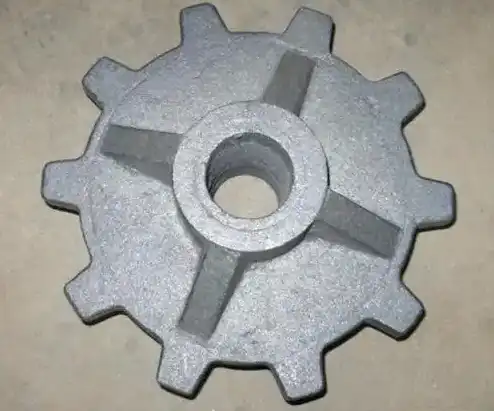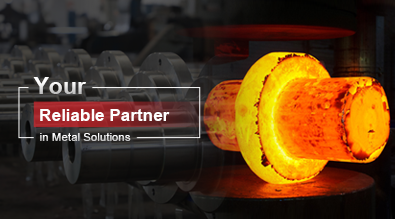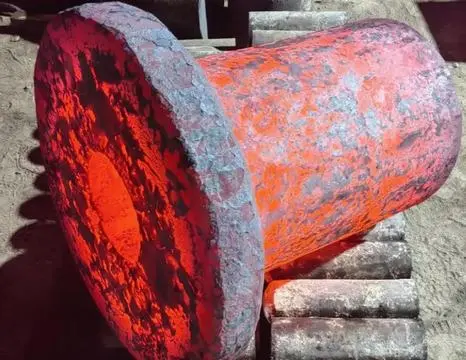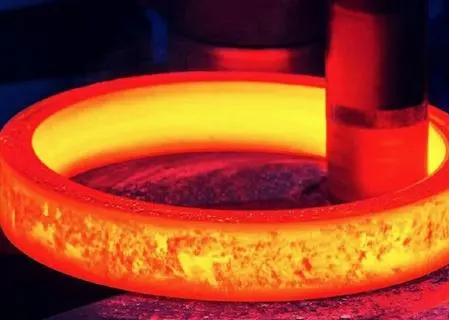Is Your Nodular Cast Iron Failing? 4 Critical Failure Signs?
Nodular cast iron, also known as ductile iron, is a versatile material widely used in various industries due to its excellent mechanical properties and durability. However, like any material, it can experience failure under certain conditions. Recognizing the signs of potential failure in nodular cast iron components is crucial for maintaining safety and preventing costly breakdowns. In this blog post, we'll explore four critical failure signs that indicate your nodular cast iron may be failing, along with common causes and potential solutions.

What Are the Most Common Causes of Nodular Cast Iron Failure?
Mechanical Stress and Fatigue
Nodular cast iron components are often subjected to various mechanical stresses during their operational life. These stresses can lead to fatigue, which is one of the primary causes of failure in nodular cast iron parts. Cyclic loading, vibrations, and impact forces can gradually weaken the material's structure, leading to the formation of microscopic cracks. Over time, these cracks can propagate and coalesce, ultimately resulting in component failure. The graphite nodules in nodular cast iron act as stress concentrators, and while they generally provide better crack resistance compared to gray cast iron, they can still be susceptible to fatigue-induced failure under extreme or prolonged stress conditions. To mitigate this risk, it's essential to properly design components, considering the expected load conditions and implementing regular inspection and maintenance routines to detect early signs of fatigue.
Corrosion and Environmental Factors
While nodular cast iron generally exhibits good corrosion resistance, it can still be vulnerable to certain environmental factors. Exposure to aggressive chemicals, high temperatures, or corrosive atmospheres can accelerate the degradation of nodular cast iron components. In particular, the presence of sulfur-containing compounds or chlorides can lead to localized corrosion, such as pitting or stress corrosion cracking. Additionally, prolonged exposure to high temperatures can cause microstructural changes in the material, potentially altering its mechanical properties and increasing its susceptibility to failure. To protect nodular cast iron components from environmental degradation, it's crucial to consider the specific operating conditions and implement appropriate protective measures, such as coatings, inhibitors, or material selection modifications when necessary.
Manufacturing Defects and Quality Issues
The quality of nodular cast iron components heavily depends on the manufacturing process and quality control measures implemented during production. Defects introduced during the casting process, such as porosity, inclusions, or improper nodule formation, can significantly impact the material's performance and lead to premature failure. Inadequate heat treatment or improper cooling rates can result in undesirable microstructures, affecting the material's mechanical properties. Furthermore, issues like improper mold design, insufficient gating systems, or poor feedstock quality can contribute to the formation of defects in the final product. To minimize the risk of failure due to manufacturing defects, it's essential to work with reputable suppliers who adhere to strict quality control standards and implement comprehensive inspection procedures throughout the production process.
How Can You Identify Early Signs of Nodular Cast Iron Degradation?
Surface Anomalies and Visual Inspection
Regular visual inspections can reveal early signs of nodular cast iron degradation. Look for surface anomalies such as discoloration, pitting, or the formation of rust-like deposits. These visual cues may indicate ongoing corrosion processes or the presence of microstructural changes. Additionally, pay attention to any unusual surface textures or roughness, as these can be signs of material degradation or the initiation of stress-induced damage. In some cases, you may observe hairline cracks or small fissures on the surface of the nodular cast iron component. These can be early indicators of fatigue or stress-corrosion cracking. It's important to note that while visual inspection is a valuable tool, it may not always reveal internal defects or degradation occurring beneath the surface. Therefore, combining visual inspections with other non-destructive testing methods is often necessary for a comprehensive assessment of nodular cast iron components.
Changes in Mechanical Properties
Monitoring changes in the mechanical properties of nodular cast iron components can provide valuable insights into their degradation status. Periodic hardness testing can reveal alterations in the material's surface properties, which may indicate ongoing degradation processes. A decrease in hardness could suggest microstructural changes or the presence of internal defects. Additionally, changes in the component's resonant frequency or damping characteristics during vibration analysis can indicate the presence of cracks or other structural anomalies. In some cases, you may notice increased flexibility or deformation in nodular cast iron parts that were previously rigid, which could be a sign of material degradation or the presence of internal defects. It's important to establish baseline measurements for critical components and regularly compare subsequent readings to detect any significant deviations that may indicate potential failure.
Non-Destructive Testing Techniques
Various non-destructive testing (NDT) techniques can be employed to identify early signs of nodular cast iron degradation. Ultrasonic testing is particularly useful for detecting internal defects, such as voids, inclusions, or cracks that may not be visible on the surface. This method can provide valuable information about the internal structure and integrity of the material. Magnetic particle inspection can be effective in detecting surface and near-surface defects in ferromagnetic nodular cast iron components. This technique is especially useful for identifying fine cracks or discontinuities that may be difficult to spot visually. Radiographic testing, using X-rays or gamma rays, can reveal internal defects and variations in material density, providing a comprehensive view of the component's internal structure. By employing a combination of these NDT techniques, it's possible to detect early signs of degradation in nodular cast iron components before they progress to critical failure stages.
What Are the Consequences of Ignoring Nodular Cast Iron Failure Signs?
Safety Hazards and Accidents
Ignoring the signs of nodular cast iron failure can lead to severe safety hazards and potentially catastrophic accidents. In industrial settings, where nodular cast iron components are often used in critical applications such as pressure vessels, pipelines, or structural supports, a sudden failure can result in the release of hazardous materials, explosions, or structural collapses. These events can pose significant risks to human life and the environment. For example, in the automotive industry, where nodular cast iron is commonly used in suspension and steering components, failure of these parts can lead to loss of vehicle control and serious accidents. In the energy sector, the failure of nodular cast iron components in power generation equipment or oil and gas infrastructure can result in widespread power outages or environmental disasters. By neglecting to address early warning signs, organizations not only put their employees and the public at risk but also expose themselves to potential legal liabilities and regulatory consequences.
Production Downtime and Economic Losses
When nodular cast iron components fail unexpectedly, it can lead to significant production downtime and substantial economic losses. In manufacturing environments, the sudden failure of a critical component can bring entire production lines to a halt, resulting in lost productivity, missed deadlines, and potential breach of contractual obligations. The costs associated with emergency repairs or replacements are often much higher than those of planned maintenance or proactive component replacement. Additionally, the ripple effects of such failures can extend beyond immediate production losses. For instance, in the case of power generation or water treatment facilities, equipment failure can lead to service interruptions affecting entire communities or industries. In the transportation sector, the failure of nodular cast iron components in vehicles or infrastructure can cause delays and disruptions to supply chains, impacting multiple businesses. These economic consequences underscore the importance of regular inspections and proactive maintenance strategies for nodular cast iron components.
Reputation Damage and Loss of Customer Trust
Failures of nodular cast iron components, especially those that result in safety incidents or significant service disruptions, can have severe repercussions on a company's reputation and customer trust. In today's interconnected world, news of such failures can spread rapidly through social media and other channels, potentially causing long-lasting damage to a brand's image. Customers and partners may lose confidence in the reliability and quality of products or services, leading to decreased sales, loss of market share, or termination of business relationships. In industries where safety and reliability are paramount, such as aerospace or healthcare, even a single incident can lead to intense scrutiny from regulatory bodies and the public. This can result in increased oversight, costly compliance measures, or even the loss of operating licenses. Moreover, rebuilding a damaged reputation can be a long and expensive process, often requiring significant investments in quality improvement initiatives, public relations efforts, and customer relationship management. By addressing nodular cast iron failure signs promptly, organizations can avoid these reputation risks and maintain the trust of their stakeholders.
Conclusion
Recognizing the signs of nodular cast iron failure is crucial for maintaining the safety, efficiency, and reliability of industrial equipment and infrastructure. By understanding the common causes of failure, implementing regular inspection routines, and utilizing advanced non-destructive testing techniques, organizations can detect potential issues early and take proactive measures to prevent catastrophic failures. Addressing these warning signs promptly not only ensures the longevity of nodular cast iron components but also safeguards against safety hazards, minimizes economic losses, and protects the reputation of businesses. As technology and materials science continue to advance, staying informed about the latest developments in nodular cast iron manufacturing and maintenance practices will be essential for optimizing the performance and lifespan of these critical components.
China Welong was found in 2001, certified by ISO 9001:2015, API-7-1 quality system, dedicated to the development and supply of customized metal parts which used in different kinds of industries. Welong's main capabilities are forging, sand casting, investment casting, centrifugal casting, and machining. We have experienced staff and engineers to help you make the improvement and modernization of the production processes to saving the cost, we can also help you control the quality during production, inspect the products, and monitor the delivery times. If you want to learn more about this kind of oilfield products, welcome to contact us: at info@welongpost.com.
References
- Smith, J. D., & Johnson, R. A. (2018). Failure Analysis of Nodular Cast Iron Components in Industrial Applications. Journal of Materials Engineering and Performance, 27(8), 4125-4137.
- Brown, E. T., & Wilson, L. M. (2019). Non-Destructive Testing Techniques for Nodular Cast Iron: A Comprehensive Review. NDT & E International, 102, 290-305.
- Garcia, C., & Martinez, S. (2020). Corrosion Behavior of Nodular Cast Iron in Aggressive Environments: Mechanisms and Mitigation Strategies. Corrosion Science, 165, 108412.
- Taylor, P. R., & Anderson, K. L. (2017). Fatigue Performance of Nodular Cast Iron: Influence of Microstructure and Processing Parameters. International Journal of Fatigue, 98, 267-281.
- Lee, S. H., & Park, J. Y. (2021). Advanced Manufacturing Techniques for Improving the Quality and Reliability of Nodular Cast Iron Components. Journal of Manufacturing Processes, 64, 1256-1270.
- Williams, D. A., & Thompson, R. B. (2016). Predictive Maintenance Strategies for Nodular Cast Iron Equipment in Industrial Settings. Reliability Engineering & System Safety, 152, 66-78.


China WELONG-Your Reliable Partner in Metal Solutions

